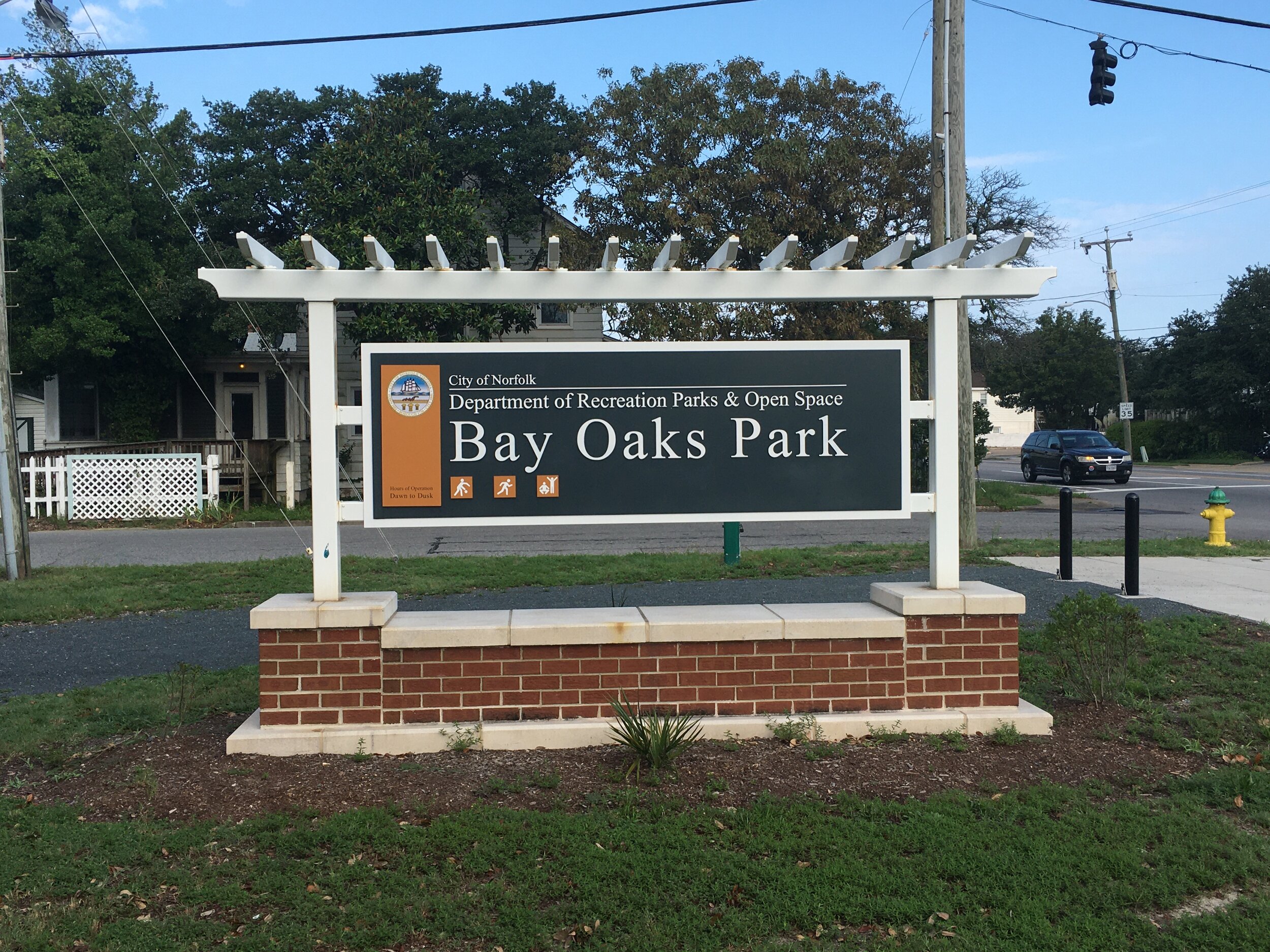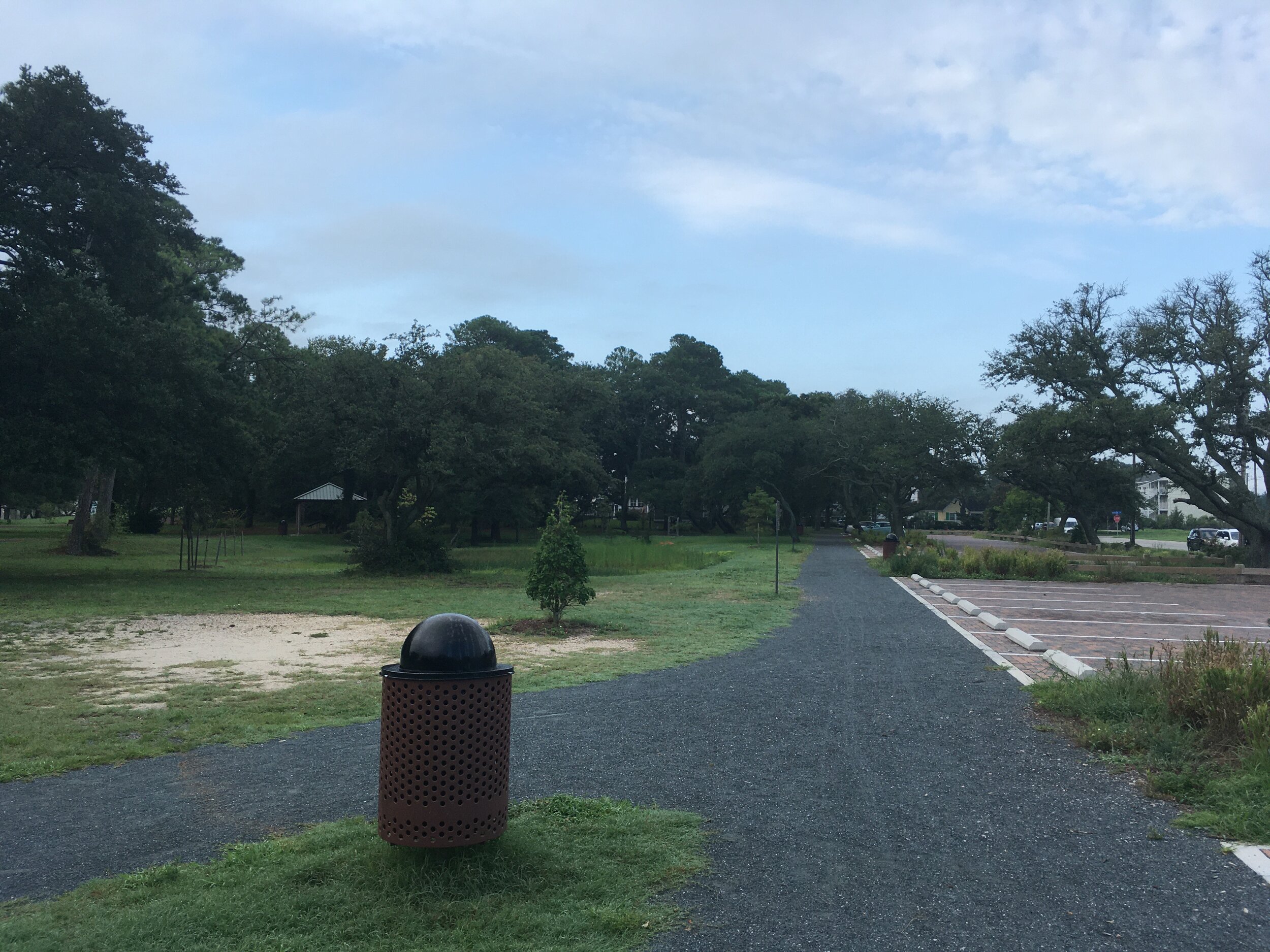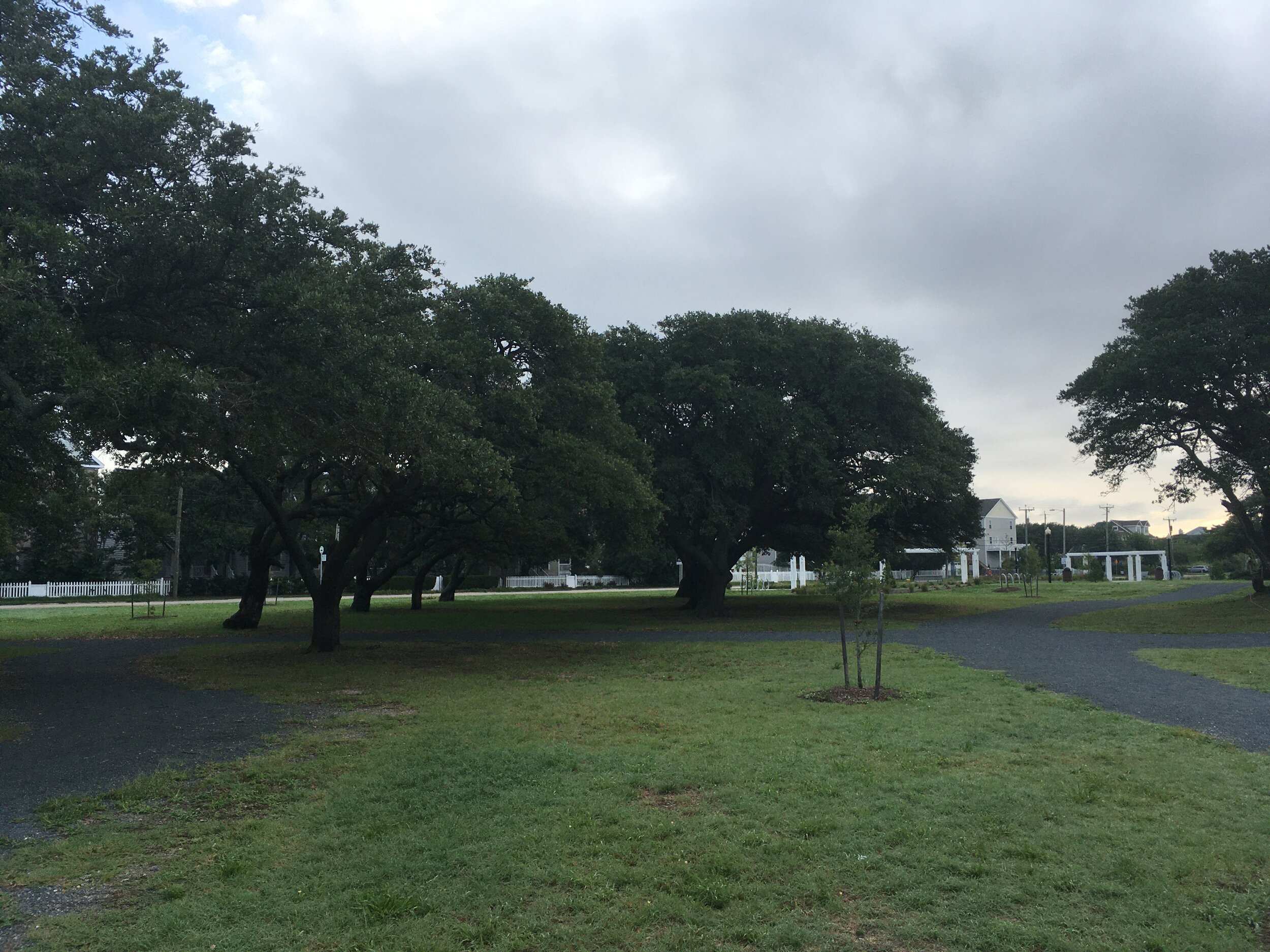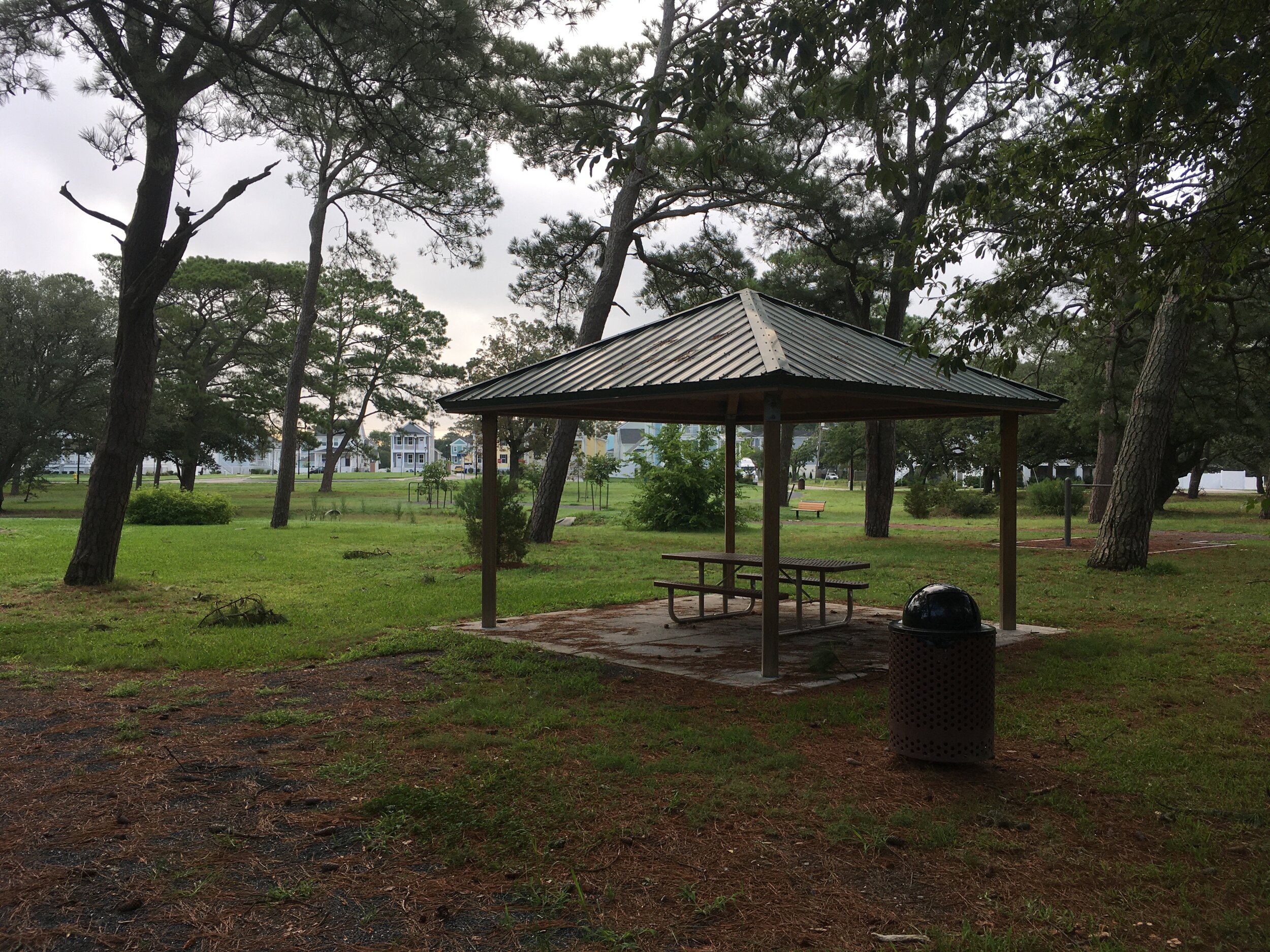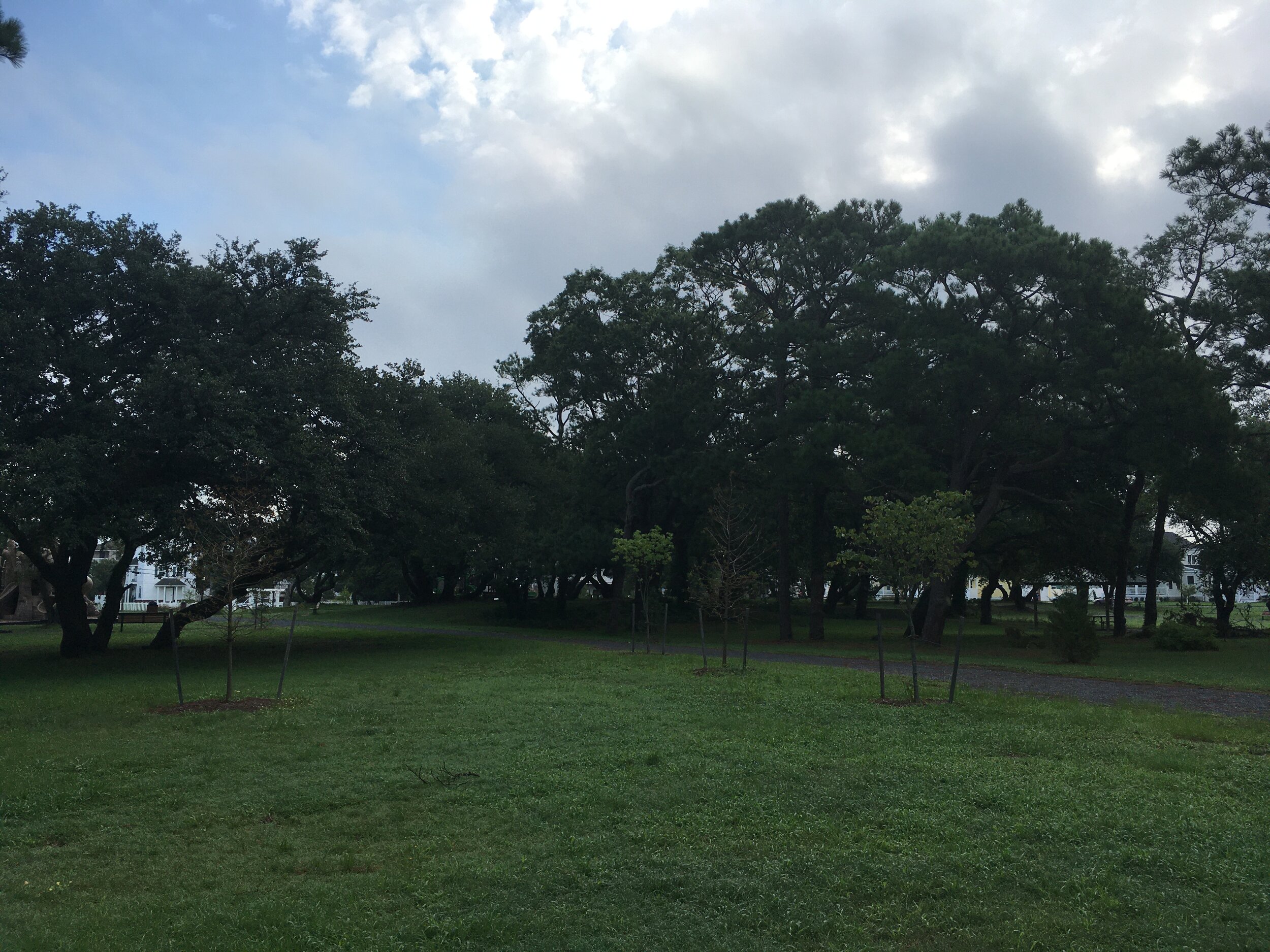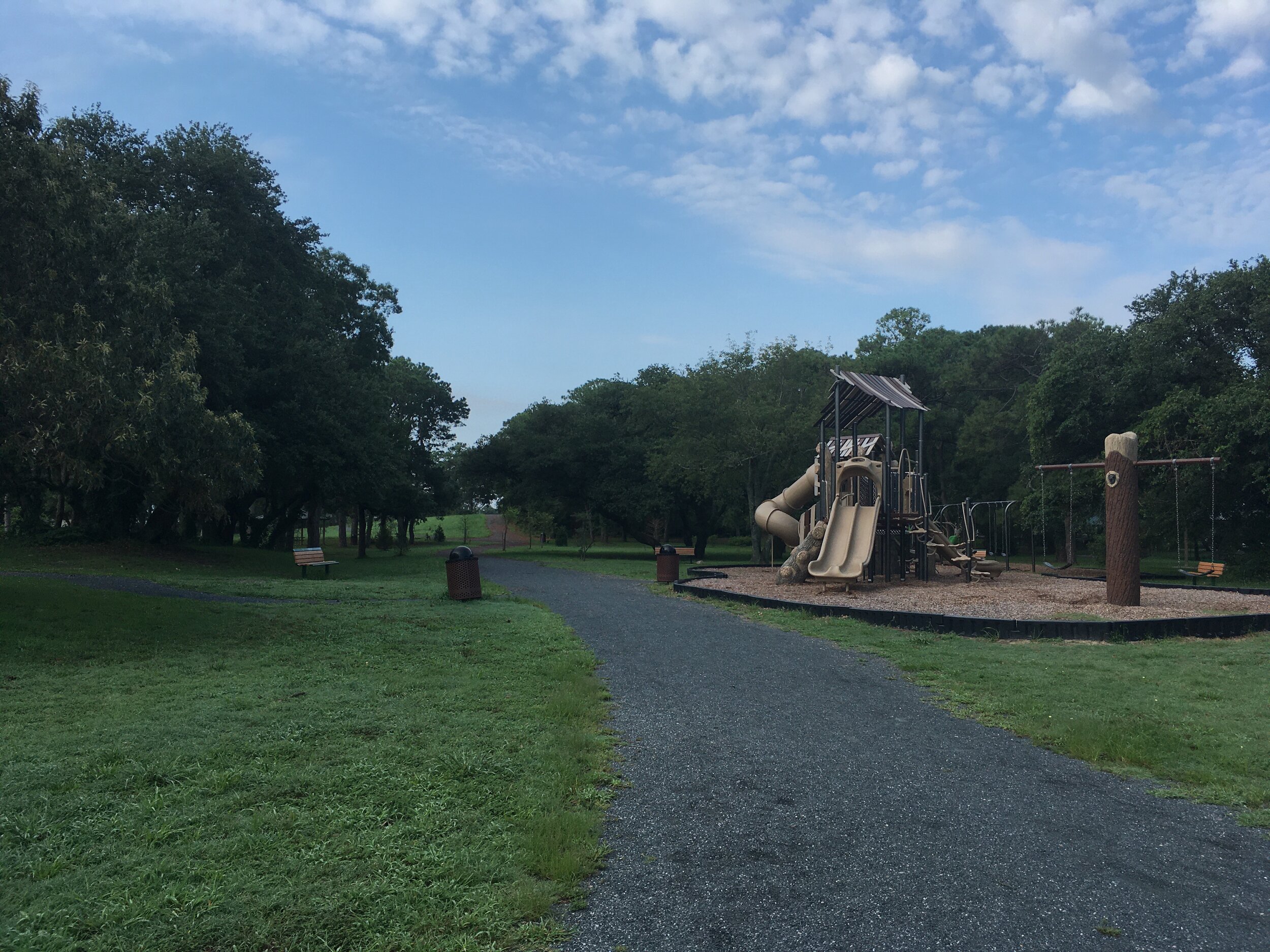To those who are not versed in its backstory, Bay Oaks Park in Norfolk may seem like a relatively unassuming city park. Located just a few hundred feet from the waterfront on Shore Drive, the most striking thing about this park is its more than 80 gnarled oak trees, some of which are thought to be over a hundred years old. The park occupies roughly a city block, and offers relatively few amenities apart from a series of gravel walking paths, a few small pavilions, and some playground equipment. It seems that birders, too, visit only seldom, with only four eBird lists submitted as of August 2020. However, all of this belies the fascinating story of how the park came to be, a complex, decade-long tale of community activism and political intrigue.
The saga of Bay Oaks Park began in the 1990s when the City purchased this land as part of a redevelopment project. Formerly, this area was occupied by a hodgepodge of mobile homes and small houses, which the City cleared as part of an effort to develop the land into higher-income housing. However, residents despaired of the impending destruction of the unique trees and pointed to the need for more parkland in this section of the City. As a result, local activists formed the Bay Oaks Park Committee in the early 2000s. Committee members mobilized public support for the park, attending council meetings, collecting over 5000 signatures on a petition, and eventually bringing their case to the state Supreme Court. Ultimately the battle over the park became such a prominent issue that it became partially responsible for the unseating of an 18-year incumbent councilman who was one of the main opponents. Since 2014, the City has spent millions of dollars developing this area into a “passive park,” creating trails and installing restroom facilities and other equipment. The park opened in 2018, and became more widely known following an official dedication ceremony the following year.
As one of the newer parks in Norfolk, Bay Oaks remains to be properly explored by birders. It is an intriguing location, with its many mature oaks offering an unusual dense cluster of large trees in a heavily-developed part of the city. The scant visits thus far by eBirders really haven’t scratched the surface, mostly reporting expected suburban species including pigeons and doves, mockingbirds, starlings, House Finches, cardinals, and House Sparrows. From this writer’s perspective, Bay Oaks Park seems like a very intriguing location to visit in spring or fall migration. Its combination of mature, well-foliated oaks trees, coastal location, and urban green space are all promising indicators that on the right morning, the trees here could be alive with passerine migrants. Perhaps this could even be a spot that someday turns up a rare vagrant in late fall or winter! Alongside familiar suburban species, its proximity to the waterfront means that Bay Oaks Park is a reasonable spot to expect flyover gulls, terns, cormorants, and other waterbirds, though this hardly distinguishes it in Norfolk, which has plenty of other areas that afford better viewing for these species. A 2019 article in The Virginia-Pilot recounting the park’s creation and dedication mentioned that the oaks provide nesting sites for “white herons.” The habitat here seems appropriate for not only nesting egrets, but also Yellow-crowned Night-Herons, a species which has been reported once despite the paucity of eBirding here.
Accessibility: Bay Oaks Park is conveniently located right along Shore Drive (US 60), situated about a block back from the waterfront. As befitting a passive park, the amenities here are fairly modest, but conducive to activities such as dog-walking, jogging, children’s playing, and of course, birding. The park is crisscrossed by a series of well-maintained gravel paths, and there are also a handful of picnic tables and small pavilions throughout. Trashcans are provided, and there are also restroom facilities. In the center of the park there is a set of playground equipment. Free public parking in a cobblestone lot is found on the west edge of the park along 3rd Bay Street.
Owner/Manager: City of Norfolk
eBird Hotspot: Bay Oaks Park
—Matt Anthony

